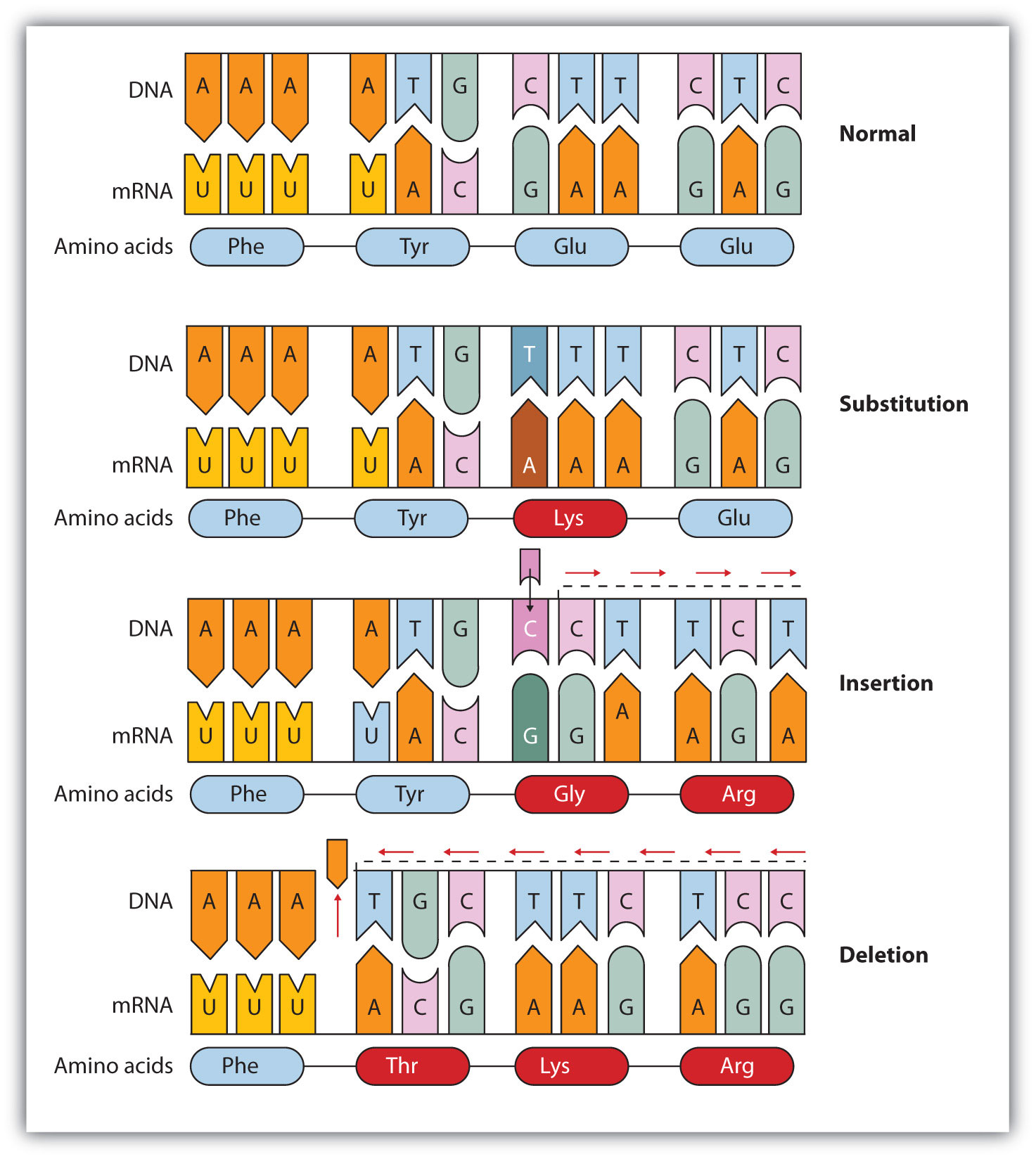Biology: Chapter 6: Nucleic acids and protein synthesis: Protein synthesis
- Protein synthesis: Process in which the bases on the DNA molecule is used to code for the sequence of amino acids in a polypeptide.
- Sequence of amino acids determine the 3-D folding of the protein and therefore it's function.
Transcription
- A section of the DNA (gene) has the instructions for creating a mRNA (messenger RNA) molecule.
- Promotor: Signals the start of a gene.
- Terminator/ Stop sequence: Signals the end of the gene.
- RNA polymerase: Binds to the promotor and when the DNA uwinds initiates RNA synthesis.
- Sense strand: DNA strand with the same code as the mRNA.
- RNA polymerase starts RNA synthesis as the DNA unwinds at the promotor.
- Moves down the DNA strand in a 5' to 3' direction, until it reaches the base code for the stop sequence at the end of the gene, where the newly formed RNA transcript peels off the template strand.
- DNA rewinds back into the double helix after the RNA synthesis.
- The mRNA breaks away from the DNA and leaves the nucleus through the nuclear pores into the cytoplasm.
- mRNA (messenger RNA): RNA transcript created in translation.
- Template strand: DNA strand that the mRNA uses as a template for RNA synthesis - the antisense strand.
 Simple diagram of transcription.
Simple diagram of transcription.Translation
- Process of building chain of amino acids following code on mRNA molecule made in transcription.
- mRNA leaves nucleus through nuclear pores into the cytoplasm.
- Ribosome (made of rRNA - ribosomal RNA) clamps around the mRNA.
- Ribosomes: Responsible for protein synthesis.
Have 2 units - large subunit and small subunit, which clamp around the mRNA.
The large subunit has 3 sites - A site, P site and E (exit) site.
These are for tRNA (transfer RNA) to come in and bond to it's complementary codon.
Two tRNA molecules can be in a ribosome at one time. Ribosome.
Ribosome. - Codon: Groups of 3 bases which code for an amino acid.
- Anti-codon: 3 bases on a tRNA. Forms a bond with it's complementary codon on the mRNA strand in the ribosome.
- tRNA (transfer RNA): Made from a single strand of RNA, twisted to form a 3 leaf clover shape. Has a anti-codon (base triplet) on one end, and amino acid attachment site on the other.
 tRNA molecule.
tRNA molecule. - The tRNA bonds to an amino acid specific to it's anticodon and carry it to the ribosome, where it forms hydrogen bonds with it's complementary codon on the mRNA strand.
- 2 tRNA molecules are in the ribosome at one time. The ribosome cuts the bonds of the amino acid and the tRNA in the P site, and the amino acid forms a peptide bond with the amino acid on the tRNA in the A site, forming a amino acid chain.
- The ribosome then moves down the mRNA chain, in a 5' to 3' direction.
- The tRNA that was previously in the P site moves to the E site, and is released from the ribosome.
- The tRNA in A is now in P, and a new tRNA enters the A site.
- The ribosome again cuts the bond between the amino acids and tRNA in the P site, which again form a peptide bond with the amino acid on the tRNA in the A site.
- The process continues, forming a polypeptide chain.
 Ribosome in translation.
Ribosome in translation. - A start codon signals the start of translation in the ribosome - usually AUG.
- When the stop codon is reached on the mRNA strand - usually UAG, UAA or UGA, the ribosome accepts a release factor, which allows the ribosome to break the bond between the last tRNA and it's now polypeptide chain, releasing the polypeptide chain, which will fold into secondary, tertiary and quaternary structures according to it's amino acid sequence.
- The ribosome and tRNA seperate from the mRNA chain.
- There are 20 different types of amino acids present in the cytoplasm.
- Many ribosomes work on the mRNA strand at one time, so multipe copies of the polypeptide can be made efficiently.
 Translation diagram.
Translation diagram.
Mutations
- Changes in the genetic material.
- Change of bases in the code, which can lead to a new gene (alleles).
- Alleles: Different types of the same gene (Blue or brown eyes).
Point mutations - Changes in just one base pair
- Substitution: Replacement of one nucleotide and it's complementary base in the DNA strand. Leads to alteration in amino acid sequence, which can hinder protein function eg. Sickle cell anemia - glutamic acid replaced with valine.
- Insertion/Deletion: A nucleotide pair inserted or removed in the DNA strand. Can result in an extra or missing amino acid. May alter reading frame (codon groups) - Frameshift mutation, which creates a protein that is almost certainly unable to function.
 DNA mutations.
DNA mutations.
This is better than a doctor. Thanks for you sharing.
ReplyDeleteIf you have stomack issue. try this
digestive enzymes